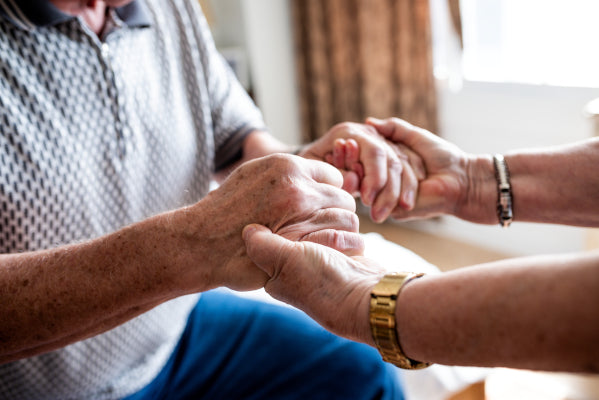Building Confidence Through Stoma Support and Advocacy
Living with a stoma after surgery can feel like a big change. A stoma is a small opening made in the abdominal wall during surgery. It allows waste to leave the body through a pouching system. Sometimes this connects to the small intestine (ileum), and sometimes to the large intestine.
Stoma surgery can save lives, but it can also raise new questions. People often wonder about diet, exercise, skin care, and even intimate relationships. These feelings are normal. The most important thing to remember is that no one has to face them alone. Support groups, advocacy groups, and caring communities are here to help.
Why Support Matters
The first weeks after surgery can feel overwhelming. Learning how to manage a pouching system takes practice. Patients may also feel nervous about leaks, skin irritation, or clothing choices. Having others to talk to makes a huge difference.
Joining a support group is one of the best ways to gain confidence. Meeting other people who live with a stoma helps you learn tricks for daily life. For example, some share how they fold medical tape for extra security. Others explain how to empty a pouch discreetly while traveling. These are small but powerful lessons that only peers can provide.
Groups also give emotional strength. Talking about fears, or even laughing about funny moments, helps reduce stress.
Organizations like the United Ostomy Associations of America (UOAA) connect people with mentors, nurses, and events. Online communities, from Facebook to YouTube, give patients round-the-clock access to encouragement and advice.
Breaking the Stigma
Even though stoma surgery saves lives by moving waste away from part of the bowel, stigma still exists. Some patients fear being judged. Others avoid social events because they worry about leaks. Advocacy helps fight these fears.
Events like World Ostomy Day raise awareness worldwide. Advocates share stories about running races, enjoying vacations, or dating with a pouching system. These real-life stories show that life after surgery is active and rewarding.
Advocates also talk openly about intimate relationships. Many people worry about how partners will react. By sharing positive stories, advocates show that trust, love, and connection are very possible.
Companies such as Best Buy Medical Supplies also play a role. They provide high-quality pouching products and educational resources. Better products reduce leaks and skin irritation, which builds confidence in daily life.
How You Can Take Part in Advocacy
Advocacy is not only for organizations. Anyone can join. Here are ways to get involved:
- Tell your story: Post on social media, record a short video, or write a blog. Real stories inspire hope.
- Join a support group: Local hospitals often host meetings. They are safe spaces to learn and connect.
- Volunteer: Become a mentor for new patients. A short phone call or meeting can ease someone’s fears.
- Raise awareness: Offer to talk at a school or workplace. Simple education reduces stigma.
- Advocate for access: Push for insurance that covers all necessary supplies, such as barrier rings and deodorant drops.
- Work with your healthcare team: Wound and stoma nurses are experts. Partner with them to spread accurate, helpful information.
Everyday Benefits of Advocacy
Advocacy improves real life in many ways. Here are some examples:
- Better restrooms: Some public places now add bins for pouch disposal.
- Workplace support: More employers are learning how to support workers with a stoma.
- Insurance coverage: Policies are improving to help patients afford bags and accessories.
- Stronger care teams: Advocacy raises awareness of wound care nurses, making them more available to patients.
Advocacy also makes people feel less alone. Seeing someone run a marathon or enjoy a beach trip with a pouch shows that life is not limited. It gives new patients hope and reassurance.
FAQs About Life With a Stoma
Can you swim with a pouching system?
Yes. Many people enjoy swimming after surgery. Using waterproof barrier strips or a snug swimsuit helps keep the pouch secure.
Will I be able to eat normally again?
Most people return to a normal diet, though it depends on the type of surgery. Some foods may cause gas or high output. It’s best to reintroduce foods slowly and track how your body responds.
What about skin irritation?
Skin irritation around the stoma is common but manageable. Using barrier wipes, powder, or a correctly fitted pouch helps protect the skin. Your healthcare team or wound care nurse can also help.
Can I travel after surgery?
Yes. Many patients travel confidently. Bring extra supplies in carry-on bags, and keep a travel card that explains your condition. Planning ahead makes trips smoother.
How do relationships change?
Most people continue to enjoy intimacy and closeness. Honest conversations with partners help build trust. Support groups also share tips on confidence and body image.
Moving Forward With Confidence
Living with a stoma is about more than a pouching system. It is about finding strength, support, and confidence. With support groups, advocacy, and guidance from healthcare teams, patients can build confidence and live full lives.
Community support turns fear into courage. Advocacy replaces stigma with understanding. Together, these efforts ensure that no one faces life after surgery alone.
👉 Explore stoma care supplies and check out educational resources to support your journey.
Disclaimer: This content is for educational purposes only and should not replace professional medical advice. Always consult your healthcare team or wound ostomy nurse for personalized recommendations.

